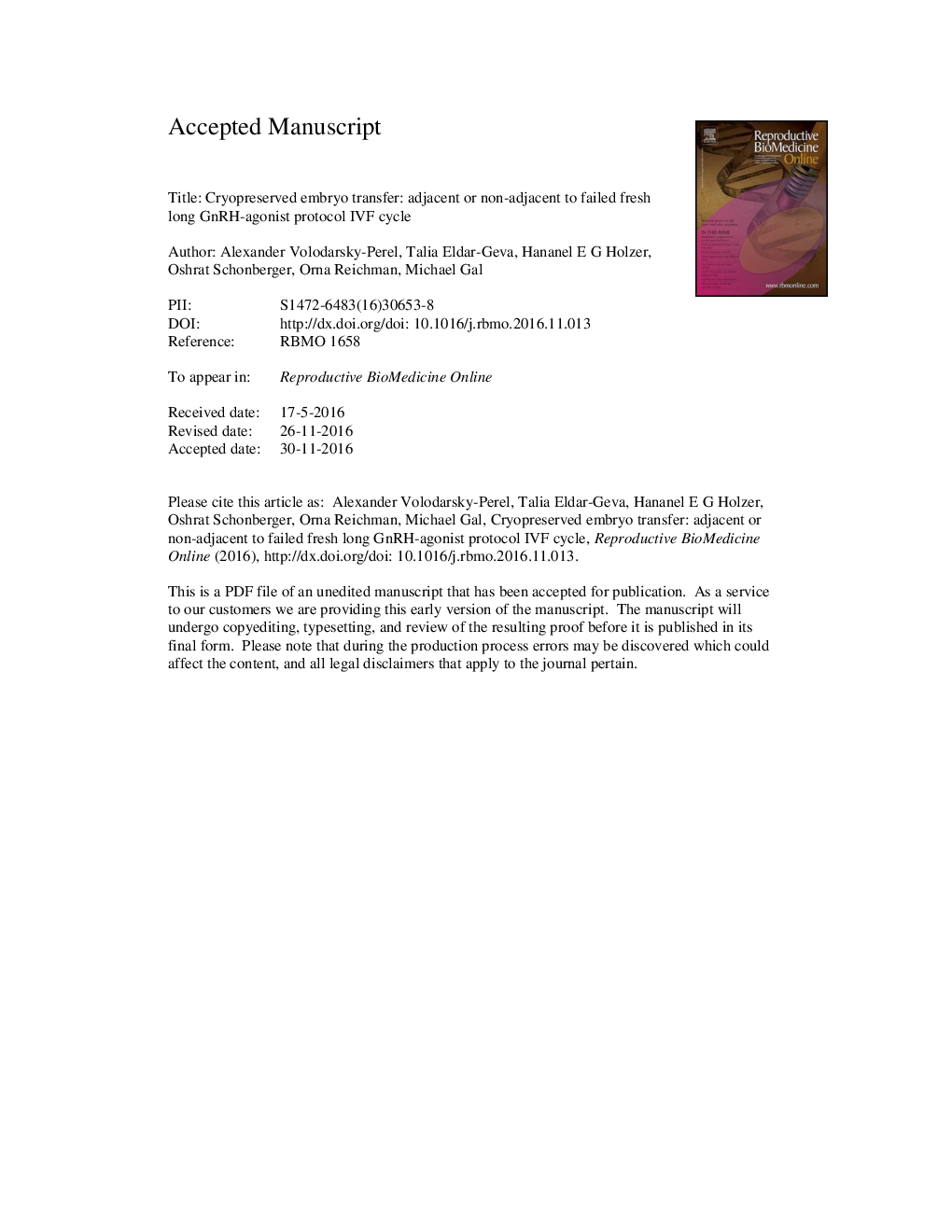| Article ID | Journal | Published Year | Pages | File Type |
|---|---|---|---|---|
| 5696706 | Reproductive BioMedicine Online | 2017 | 14 Pages |
Abstract
The optimal time to perform cryopreserved embryo transfer (CET) after a failed oocyte retrieval-embryo transfer (OR-ET) cycle is unknown. Similar clinical pregnancy rates were recently reported in immediate and delayed CET, performed after failed fresh OR-ET, in cycles with the gonadotrophin-releasing hormone (GnRH) antagonist protocol. This study compared outcomes of CET performed adjacently (<50 days, n = 67) and non-adjacently (â¥50 to 120 days, n = 62) to the last OR-day of cycles with the GnRH agonist down-regulation protocol. Additional inclusion criteria were patients' age 20-38 years, the transfer of only 1-2 cryopreserved embryos, one treatment cycle per patient and artificial preparation for CET. Significantly higher implantation, clinical pregnancy and live birth rates were found in the non-adjacent group than in the adjacent group: 30.5% versus 11.3% (P = 0.001), 41.9% versus 17.9% (P = 0.003) and 32.3% versus 13.4% (P = 0.01), respectively. These results support the postponement of CET after a failed OR-ET for at least one menstrual cycle, when a preceding long GnRH-agonist protocol is used.
Keywords
Related Topics
Health Sciences
Medicine and Dentistry
Obstetrics, Gynecology and Women's Health
Authors
Alexander Volodarsky-Perel, Talia Eldar-Geva, Hananel E.G. Holzer, Oshrat Schonberger, Orna Reichman, Michael Gal,
